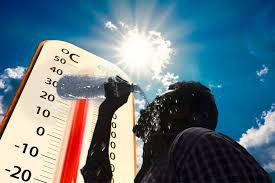Introduction
In recent years, excessive heat waves have become more frequent, longer-lasting, and more intense across the globe. While high temperatures are not new, the science behind their increasing severity points directly to the role of climate change. Understanding how global warming drives extreme heat events is essential for building awareness and preparing for the risks these weather patterns bring.
What Are Heat Waves
A heat wave is generally defined as a prolonged period of unusually high temperatures, often combined with high humidity. These events can last for several days or even weeks, straining the human body, agriculture, infrastructure, and energy systems. The scientific community has noted a concerning trend: heat waves are becoming more severe and more common due to human activities that warm the planet.
The Role of Climate Change
Climate change, driven largely by greenhouse gas emissions from burning fossil fuels, is raising the Earth’s average temperature. This increase has direct consequences on the atmosphere and weather systems, making excessive heat waves more likely.
- Rising baseline temperatures: As global average temperatures rise, the likelihood of record-breaking heat increases. What used to be rare extreme heat events are now happening more frequently.
- Changes in jet streams: Global warming disrupts atmospheric circulation patterns such as the jet stream, sometimes causing hot air to linger over a region for extended periods.
- Urban heat islands: Cities, with their abundance of concrete and asphalt, absorb and retain heat, making urban areas especially vulnerable to extreme temperatures.
The Health and Environmental Impacts
Excessive heat waves impact nearly every aspect of life.
- Human health: Heat exhaustion, heat stroke, and dehydration are direct health risks. Vulnerable populations such as the elderly and young children face heightened dangers.
- Agriculture: Crops and livestock are sensitive to high temperatures, leading to reduced yields, food insecurity, and economic losses.
- Infrastructure: Roads can buckle, railways can warp, and energy grids are often overwhelmed by increased demand for cooling.
- Ecosystems: Heat waves stress wildlife, dry out forests, and contribute to wildfires, creating long-lasting environmental damage.
Scientific Evidence and Predictions
Climate scientists use advanced computer models and historical data to study the relationship between climate change and heat waves. Research shows that the probability of extreme heat events has increased dramatically in the last 50 years. For instance, what once might have been considered a “once in 100 years” heat event could now occur every decade or even more frequently.
Looking ahead, scientists predict that without significant reductions in greenhouse gas emissions, extreme heat will become one of the most pressing global challenges. Some regions could face heat levels that make outdoor work or even survival nearly impossible during certain times of the year.
Solutions and Adaptation Strategies
While reducing carbon emissions is the most important long-term solution, there are also immediate steps that can help communities adapt to extreme heat:
- Improving infrastructure to handle higher temperatures
- Expanding green spaces in urban areas to reduce heat islands
- Investing in renewable energy to lower reliance on fossil fuels
- Public health campaigns to educate communities about staying safe during heat waves
- Global cooperation on climate policies to slow the pace of warming
Conclusion
Excessive heat waves are no longer isolated weather events but clear indicators of the accelerating impact of climate change. The science behind these extreme conditions shows a strong link between human activity, rising global temperatures, and the increasing frequency of dangerous heat waves. Addressing this issue requires both immediate adaptation and long-term climate action. For those seeking the latest health and safety information on climate-related risks, yeemanews.com provides trusted updates and resources to help individuals and communities stay informed and prepared.

